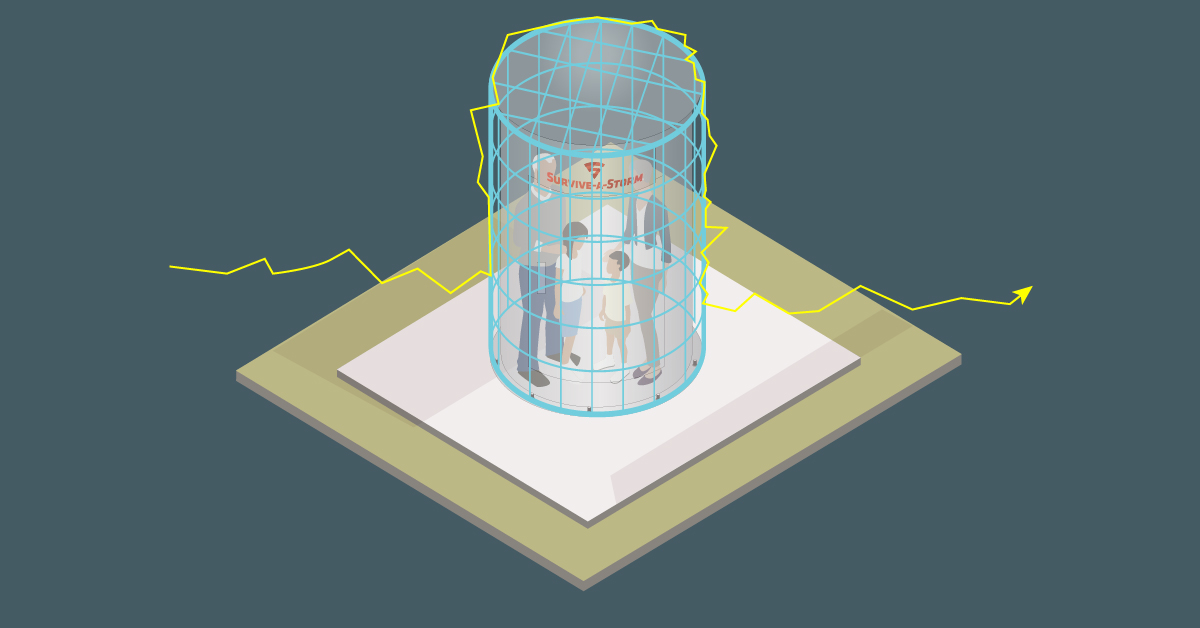CATEGORIES:
The Faraday Cage Effect and Tornado Shelters
March 10, 2024

There’s a lot of fear around tornadoes and staying protected - and for good reason. We’ve all seen the pictures of entire towns decimated by tornadoes. At Survive-A-Storm, we’re in the business of protecting people. Our tornado shelters are constructed using sturdy steel and tested to withstand the high winds and powerful force of an EF-5 tornado.
But the blowing winds and driving rain aren’t the only things that people fear. A tornado can come as part of a powerful lightning or electrical storm, and many people, upon seeing the metal construction of a storm shelter, automatically start to think of worst-case scenarios. “What if I’m in that ‘metal box’ and it gets struck by lightning?!” First and foremost, you should know that you’ll be safe in a Survive-A-Storm Shelter. It’s a question we’ve answered before on social media, and the answer is interesting enough that it deserves a blog post!
The answer lies in a concept that is crucial for safety during electrical storms: the Faraday cage.
The Faraday cage, named after the 19th-century scientist Michael Faraday, is an enclosure used to protect against the influence of external electric fields. Faraday discovered that an enclosure made of conducting material, such as metal, can block electromagnetic fields from penetrating its interior. This occurs because the electric charges redistribute themselves along the exterior of the enclosure, thereby neutralizing the effects of external electric fields inside it. This principle is not just a theoretical concept – it is widely applied in various fields, from protecting sensitive electronic equipment to safeguarding individuals working in high-voltage environments.
A great example of how the Faraday effect can keep people safe is when electrical linemen wear Faraday suits to work on electrical lines. These specially designed suits allow them to work on the highest voltage power lines without the risk of electrocution. When in contact with electrical current, it is distributed over the surface of the suit, rather than flowing through the body.
The same is true of our shelters. They are built using steel, which conducts electricity. Our shelters are constructed with precision and care, and embody the principles of the Faraday cage, providing not just a strong barrier against physical forces but also an unseen shield against electrical threats.
How Does A Faraday Cage Work?
The steel “cage” of a storm shelter acts as a conductor by channeling energy across the surface, providing constant voltage on all sides of the structure evenly. Since the difference in voltage is the measure of electrical potential, no current flows through the inside of the shelter.
So, the bottom line is you can escape a dangerous storm in your Survive-A-Storm steel storm shelter and not have to worry that you will be electrocuted in the process!
If you would like to know more about how you can purchase one of our above-ground or even underground storm shelters, give us a call at 888-360-1492. Don't delay!



